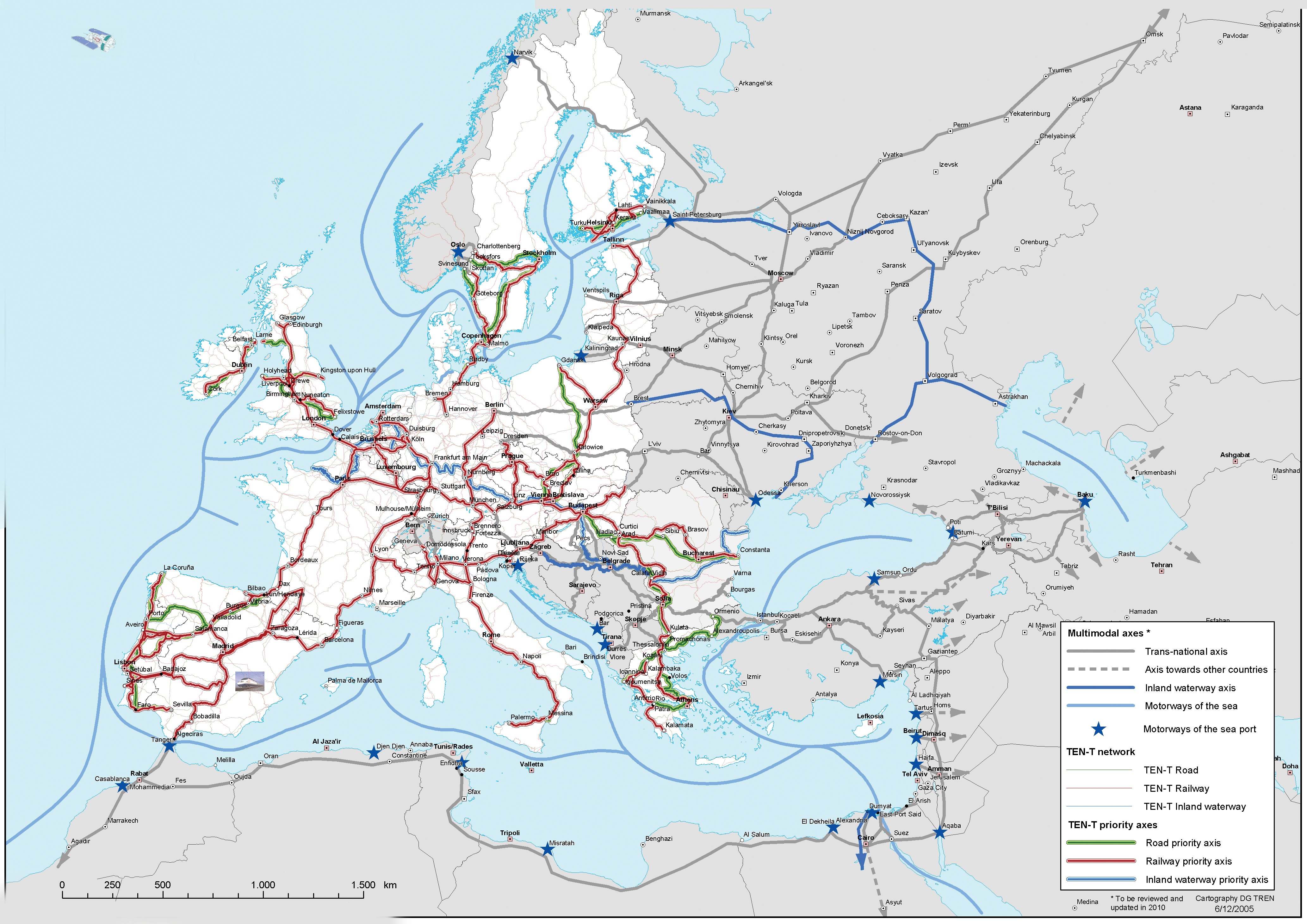• 96 000 km of roads
• 106 000 km of railways of which 32 000 will be high speed
• 13 800 km of inland waterways
• 411 airports
• 400 international ports
• 3 000 domestic airports
• traffic management system
• Total cost estimated at 250 billion euros
The Trans European Transport Network (TEN-T) was established in the aftermath of the Maastricht-agreement in the early 1990s. TEN-T focused on the EU's internal market and the so-called four freedoms: Free movement of goods, persons, services and capital.
Developing the physical infrastructure both between and within the member-states was seen as an important factor in increasing growth and appreciation within the European Union. Therefore TEN-T is definitively regarded as part of the Lisbon-strategy to improve competi-tiveness and employment.
In 1994 there were 14 TEN-T projects. Ten years later the list was expanded to a total of 30. The list was drawn up in accordance with the input of the member-states. Included are the key corridors of transport in the Union, dealing with more than half of all transport volumes (passengers + goods) on land. New additions included Motorways of the Sea, Inland waterway projects and the Galileo system for satellite navigation.
It is expected that the transport of goods within the EU will grow by more than two-thirds during the period 2000-2020. TEN-T will be a central tool in facilitating this expansion. An overall goal remains the transfer of transport from the roads to rail and sea.
In 2005 it was concluded that the progress of TEN-T was too slow. To secure improved progress the EU has appointed special European Coordinators. As of September last year seven different projects had been assigned such special coordinators.

Major trans-National axes and Motorways of the Sea ports
By Odd Iglebaek